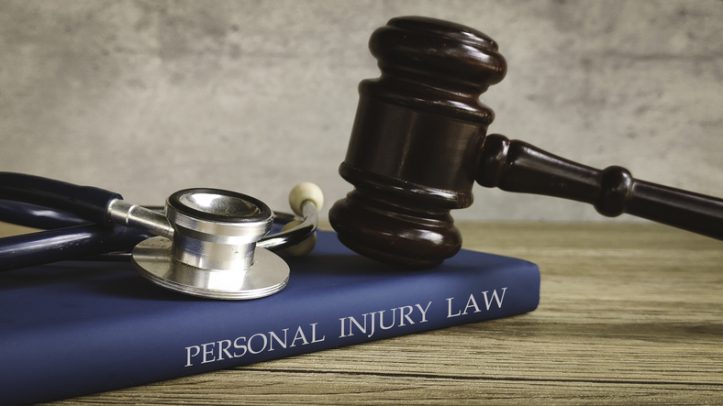
Florida’s Insurance Shake-Up: What New Tort Reforms Mean for Accident Victims
Florida’s civil justice landscape has undergone one of its most significant overhauls in decades. With the passage of House Bill 837 in 2023 and continuing legislative tweaks through 2025, the state’s long-debated tort reform movement is reshaping how injury claims are handled — from auto accidents to medical negligence suits.
While supporters of the reforms argue that these changes will reduce frivolous lawsuits and stabilize skyrocketing insurance premiums, critics warn they will tilt the scales of justice sharply in favor of insurers. For accident victims, particularly in areas like Pensacola where insurance disputes are common, understanding these reforms isn’t optional — it’s essential.
A Paradigm Shift: Florida’s New Comparative Negligence Rule
Perhaps the most consequential change introduced by HB 837 is Florida’s move from pure comparative negligence to a modified comparative negligence standard.
Previously, under the old system, a plaintiff could recover damages even if they were 99% at fault — their award would simply be reduced proportionally. Under the new rule, however, if a plaintiff is found more than 50% at fault, they are barred from recovering any damages at all.
This change brings Florida in line with the majority of states but creates major implications for personal injury cases, especially those involving multi-vehicle collisions or unclear liability. For instance, in a Pensacola intersection crash where fault is disputed between drivers, juries now play an even larger role in determining whether an injured party is entitled to any recovery at all.
Legal experts have cautioned that insurers are already leveraging this reform to pressure injured claimants into early settlements, emphasizing the risk of being found just over that 50% threshold.
Statute of Limitations: Shorter Deadlines, Faster Denials
Another significant shift is the reduction of the statute of limitations for negligence actions from four years to two years.
That means Florida accident victims now have half the time to file a lawsuit after an injury occurs.
The goal, according to legislators, is to reduce stale claims and encourage faster resolution. But for many working-class Floridians who face extended recovery periods, insurance delays, or medical uncertainty, the shortened window can close the courthouse doors before they’re ready to act.
This change has already caused a surge in filings ahead of the law’s effective date — and many attorneys are now advising clients to initiate claims quickly, rather than negotiating for months with insurance companies who often stall in hopes the clock will run out.
Bad Faith Protections: Insurers Get the Upper Hand
The reforms also make it more difficult to pursue bad faith claims against insurance companies.
Under HB 837, insurers are now given a safe harbor period of 90 days to pay the claim after receiving proper notice. As long as they make a “reasonable settlement offer” within that window, they are shielded from bad faith liability.
The American Association for Justice and consumer advocacy groups have argued this provision effectively removes accountability for insurers who engage in delay tactics or lowball settlements.
For victims already navigating injuries, financial stress, and medical debt, the balance of power has shifted even further away from the individual.
Changes to Attorney Fees and Evidence Rules
Florida’s new reforms also reworked attorney fee structures, eliminating one-way attorney fees in most insurance cases. Previously, when a policyholder successfully sued their insurer, the insurer would pay their legal fees. That provision incentivized attorneys to take legitimate but challenging claims.
Now, those costs fall back on the injured party unless otherwise specified by contract. The practical effect is that many smaller claims will never see court, since the cost of litigation can easily outweigh the potential recovery.
Additionally, HB 837 revises evidence admissibility regarding medical expenses. Plaintiffs can no longer present the full amount billed by providers; instead, they’re limited to showing what was actually paid or what would have been paid by insurance. This seemingly technical change significantly reduces potential damage awards, particularly for uninsured plaintiffs.
Regional Impact: What It Means for Pensacola Residents
In Northwest Florida, where auto accidents, workplace injuries, and storm-related claims are common, these legal shifts are already being felt.
Pensacola’s mix of tourism, military presence, and aging infrastructure creates a steady stream of personal injury cases — but under the new system, the margin for legal error is smaller than ever.
In practical terms, that means accident victims must act faster, document more thoroughly, and secure legal representation earlier in the process. Without prompt filing, detailed medical documentation, and strategic negotiation, even strong claims can be undercut by procedural technicalities.
Final Thoughts: Leveling the Playing Field for Florida Injury Victims
Supporters of Florida’s tort reform insist the new system brings balance to an overburdened court system. Yet for everyday Floridians recovering from car crashes, workplace injuries, or medical mistakes, the reality feels far less balanced.
Insurance companies now enjoy more protection, shorter timelines mean fewer cases reach court, and victims bear a heavier burden of proof.
Navigating this post-reform environment requires precision, speed, and local insight. For those facing injury or loss in the Panhandle, partnering with an experienced Pensacola personal injury law firm can make the difference between being quietly denied and being fully compensated.


